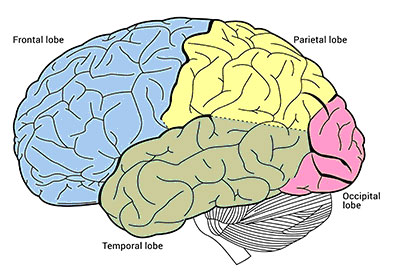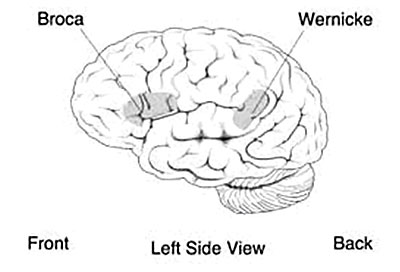Blog
Acquired Language Disorders: Aphasia
Aphasia: The loss of ability to understand or express speech, caused by damage or trauma to the brain, such as a stroke, traumatic brain injury (TBI), or other diseases or conditions.
I have had quite a few of my adult clients asking me questions about their language and speech deficits after a traumatic event. I receive comments and questions such as “I thought people with a stroke were supposed to present with (xyz)…” and “Why is this part of my language affected but not another?”. Knowing the different types of aphasia one could present with after trauma such as a stroke or TBI could be helpful in knowing how to treat the condition. However (as my professor used to say), “the brain never read the book”, and no two cases of aphasia are alike. An individual can present with symptoms from multiple types of aphasias.
There are two main categories of aphasias: nonfluent aphasia and fluent aphasia. In a nonfluent aphasia, the individual’s speech production is effortful. Their grammar is impaired, although content words (the important words that help get the message across) may be preserved. In a fluent aphasia, the person is able to produce connected speech, however, their utterances typically lack meaning.
(These two pictures are diagrams of the brain, which will help when discussing the site of lesion [place of damage] for each type of aphasia)


Broca’s Aphasia is a nonfluent type of aphasia. The site of lesion, or where the damage is, is typically the left side of the frontal lobe. Symptoms of BA include anomia (or word finding difficulties), short phrase length (usually 0-5 words per breath), and relatively good auditory comprehension/receptive language skills relative to verbal abilities. These individuals tend to have relatively poor repetition skills. Most of their sentences are short and incomplete. Their speech sounds effortful and distorted, and typically only contains content words, such as nouns and often used verbs.
Transcortical Motor Aphasia (TMA) is a second type of nonfluent aphasia. The site of lesion could be in various areas, including the frontal lobe, the supplementary motor cortex, white motor pathways under the supplementary motor area (SMA), or the left frontal lobe, which is in front of and above Broca’s area. Symptoms of TMA include impaired initiation of verbal output, anomia, short phrase length (0-5 utterances per breath), good auditory comprehension, and good repetition (unlike Broca’s). Their speech sounds less effortful than those with Broca’s Aphasia, and also incorporates more articles and auxiliaries (“the”, “a”, etc).
Global Aphasia is another type of nonfluent aphasia. This is the most severe type of aphasia, as comprehension, expressive language, reading, and writing are all affected. These individuals present with profound anomia, which results in almost no verbal output, however, they can present with “stereotypic utterances” at times, such as repetition of nonsense syllables, or repeating one phrase over and over again. Global aphasia is also marked by very poor auditory comprehension and poor repetition skills. The site of lesion for global aphasia is very large, and can take place in a multitude of areas. This can occur in both divisions of the middle cerebral artery (MCA), the zone of language, or in large portions of the left fronto-parieto-temporal area.
Mixed Nonfluent Aphasia is another type of nonfluent aphasia that seems to lie in between Broca’s Aphasia and Global Aphasia. These individuals present with severe anomia, relatively poor auditory comprehension, and poor repetition of words and/or phrases. Their expressive speech, or articulation, is effortful.
Wernicke’s Aphasia is the first type of fluent aphasia. The site of lesion is typically the back third of the temporal lobe. Symptoms of Wernicke’s Aphasia include anomia, poor auditory comprehension, and poor repetition. Those with poor auditory comprehension skills tend to have a more difficult time improving their symptoms, because how can you expect a person to fix a problem they don’t know they have? These individuals present with longer strings of speech than those with a nonfluent aphasia, however, their speech tends to consist of “empty speech”.
Transcortical Sensory Aphasia is another type of fluent aphasia. The site of lesion is typically in the back of the parietal lobe and into the temporal lobe, but spares Wernicke’s area. These individuals present with poor auditory comprehension, relatively good repetition (unlike those with Wernicke’s Aphasia), severe anomia that disrupts the “flow” of their utterances, however their speech tends to present as grammatically intact.
Conduction Aphasia is another type of fluent aphasia. The site of lesion tends to vary from case to case, and can exist in several different brain networks. These individuals tend to present with anomia, good auditory comprehension, impacted repetition, and efforts to correct themselves. An average phrase length is typical in those with CA, however, their conversational “flow” can be interrupted by their self correcting efforts.
Anomic Aphasia is another type of fluent aphasia, and is also the least severe type of aphasia. As aphasias evolve and become treated, they typically turn into Anomic Aphasia. These individuals present with word finding deficits across tasks, intact auditory comprehension, and intact repetition.
Lecture @ Adelphi University, 2016, Oren Abramowitz, M.S. CCC-SLP
-Jessica Eberhart M.S., CF-SLP, TSSLD




